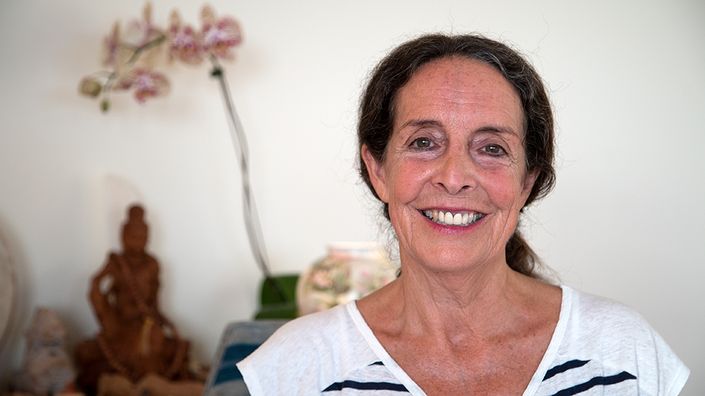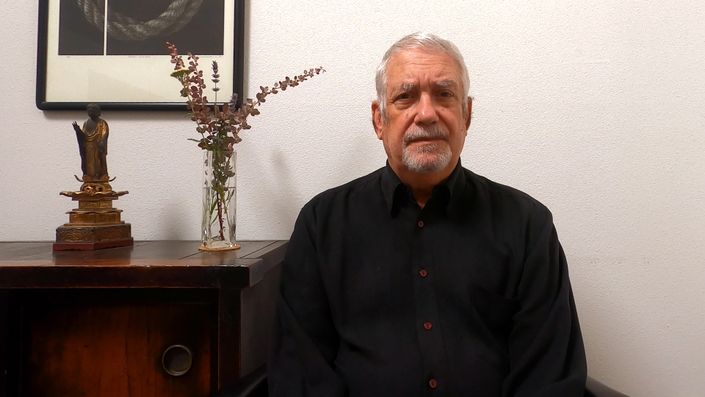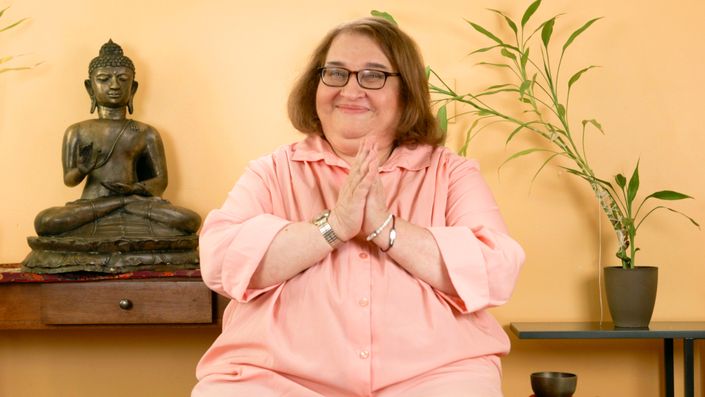The Posture of Meditation
Learn three principles of posture that deepen meditation and relaxation in this online course with Will Johnson.
Take your seat
What is the common ground between all forms of Buddhist practice? It’s the sitting posture itself. In this online workshop, Will Johnson shares his methods for awakening the body to sit with ease, comfort, and mindfulness. This is a course about how to sit, but more than that, it is about how to use the sitting posture as a vehicle for deep meditation, deep letting go. This is a course about reconnecting with the body and allowing thought to settle as we return to the alive presence and energetic shimmer of our senses.

Benefits of the Course

Calm the chattering mind
There’s nothing wrong with our everyday consciousness of random unbidden thoughts, it’s just incomplete. We can reconnect with the shimmering aliveness of the body in order to feel relaxed, refreshed, and restored.

Discover The Shimmer
Energetic sensations are always occurring throughout the body but are suppressed when we're lost in thought. We can awaken this enlivening energy, known as prana, through awareness of the body.

Deepen your practice
The body keeps the score. Will offers exercises throughout to help you go deeper into somatic, embodied experience.

Experience profound relaxation
Meditation isn't about straining to sit like a stone statue of the Buddha. The reason we sit upright is so that our musculature can relax. Then we're not putting effort in to hold ourselves up. And when we relax the body we relax the sense of separation between ourselves and the world around us.

A course for everyone
The sitting posture is common to all Buddhist traditions and beyond. This course will be helpful to everyone, from beginners looking to sit pain-free to expert meditators interested in furthering their embodied practice.

Over 2 hours of video guidance
Benefit from Will's decades of practice and teaching in six video sessions along with inquiry practices, a quiz, structured reflections, a discussion forum, and a workbook.
Are you sitting comfortably?
All too often we hear stories of people going into multiday retreats and loving the wisdom teachings but finding the experience of sitting very, very uncomfortable. So much pain comes up in the body and it doesn't have to be that way.
Yes, these practices will expose places in our psyche, things that we've repressed or weren't able to feel at the time that they emerged. Those come up naturally. That's part of the healing process. What we don't need is unnecessary pain and tension from not understanding the posture of meditation.


Meet Will Johnson
Will Johnson became a Buddhist practitioner in 1972. He began the formal sharing of the practices of Embodiment Training in 1995. He and his wife Coco live at the southern tip of the Nicoya peninsula in Costa Rica where they have created the Hollow Bamboo Retreat Center. Here, they welcome serious meditation students to enter into intensive 7-21 day self retreat.
Will is the author of several books and articles, including The Posture of Meditation, the second edition of which was recently published by Shambhala Publications. His website is www.embodiment.net.
6 Video Sessions
Find out what each 20-minute video session contains.
Full Curriculum
- The Posture of Meditation
- Upright and Relaxed (18:56)
- Check Your Understanding
- Relaxed and Awake to Sensations (18:35)
- Moving with the Breath (17:18)
- Reflect
- Prana, The Shimmer
- Breathing Through the Whole Body (20:20)
- Finding Your Posture (24:31)
- Opening Your Eyes (19:03)
- Discuss
- Key Points to Remember
Related courses
You might also be interested in.





